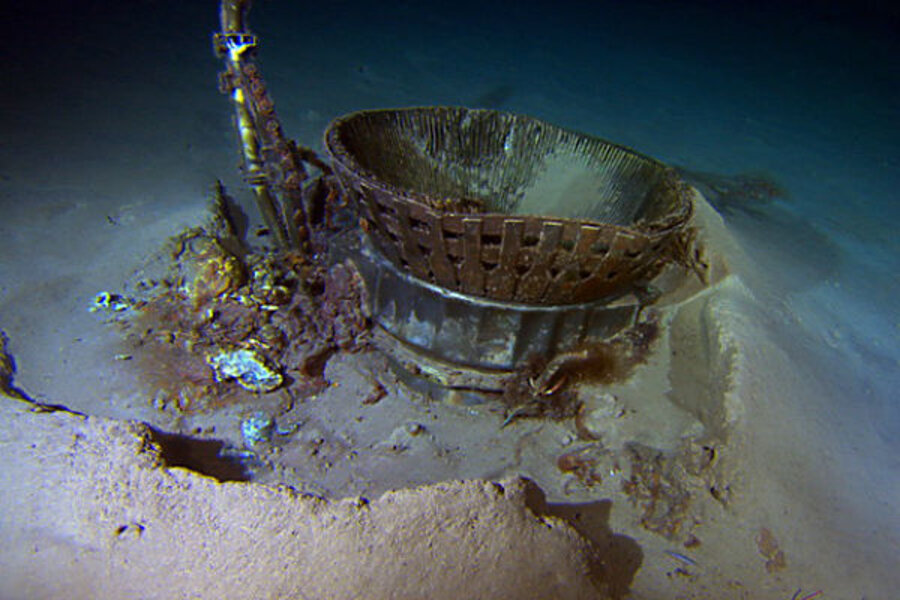NASA to restore Apollo engines found on ocean floor
Loading...
Last year, Amazon.com founder Jeff Bezos announced that he had located some of the Apollo F-1 rocket engines and planned to recover them. He and his Bezos Expedition team were successful in recovering engines that helped power Apollo astronauts to the Moon and have now brought “a couple of your F-1s home,” Bezos said in a message to NASA. On the Bezos Expedition website, Bezos called the recovery “an incredible adventure.”
NASA was happy about the recovery as well.
“This is a historic find and I congratulate the team for its determination and perseverance in the recovery of these important artifacts of our first efforts to send humans beyond Earth orbit,” said NASA Administrator Charlie Bolden in a statement. “We look forward to the restoration of these engines by the Bezos team and applaud Jeff’s desire to make these historic artifacts available for public display.”
There is no indication so far from Bezos of which flight these engines were from. Last year when Bezos made his announcement, he said they had found the engines from Apollo 11, but it may be been difficult to determine exactly which flight the ones found were from. In total, NASA launched 65 F-1 engines, five per flight, on 13 Saturn V boosters between 1967 and 1973. Supposedly there would be serial numbers to make the identification of which flight these engines were from. Bezos indicated on his blog they were still on the ship, so perhaps the identification will come later.
Five F-1 engines were used in the 138-foot-tall S-IC, or first stage, of each Saturn V, which depended on the five-engine cluster for the 7.5 million pounds of thrust needed to lift it from the launch pad. Each of the engines stands 19 feet tall by 12 feet wide and weigh over 18,000 pounds.
Bezos and his team spent three weeks at sea, working almost 3 miles below the surface. “We found so much,” Bezos wrote. “We’ve seen an underwater wonderland – an incredible sculpture garden of twisted F-1 engines that tells the story of a fiery and violent end, one that serves testament to the Apollo program. We photographed many beautiful objects in situ and have now recovered many prime pieces. Each piece we bring on deck conjures for me the thousands of engineers who worked together back then to do what for all time had been thought surely impossible.”
See more images and descriptions at the Bezos Expeditions website.







